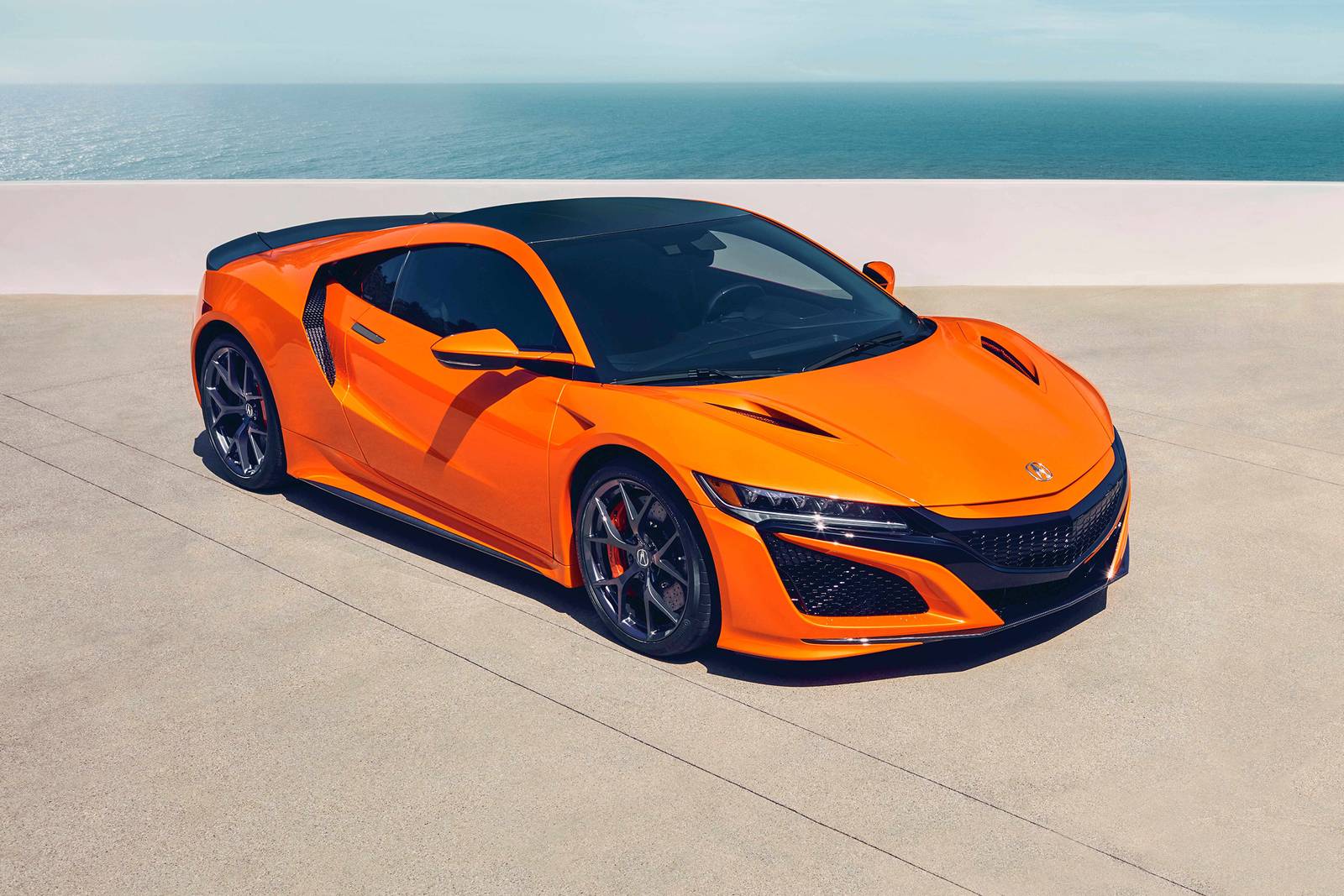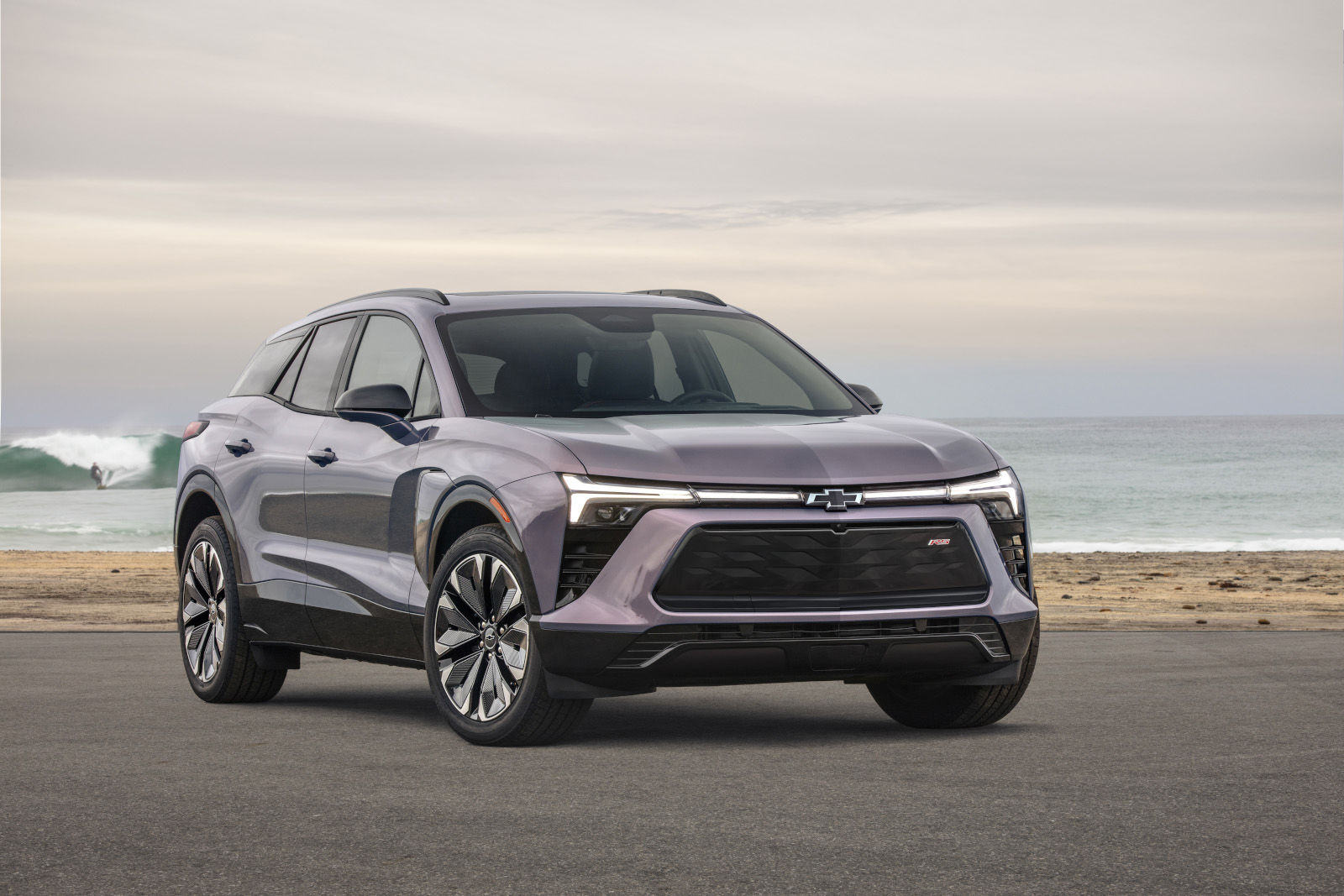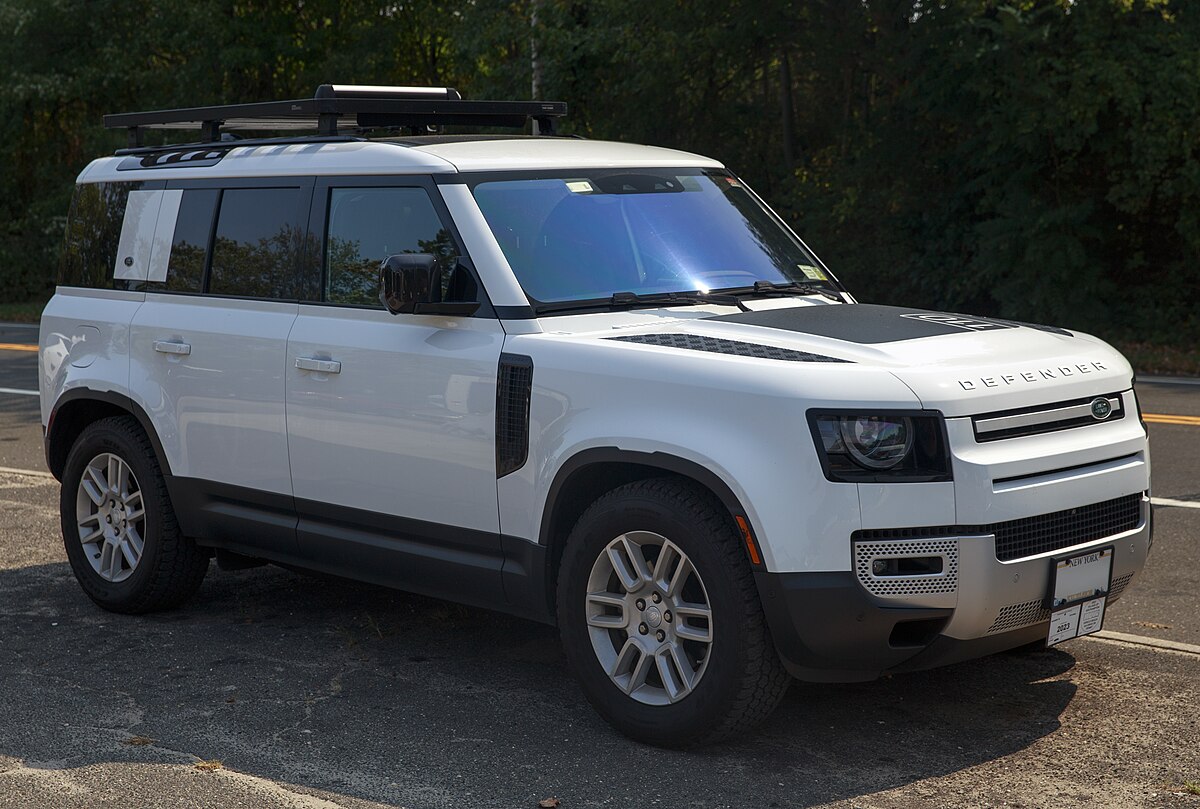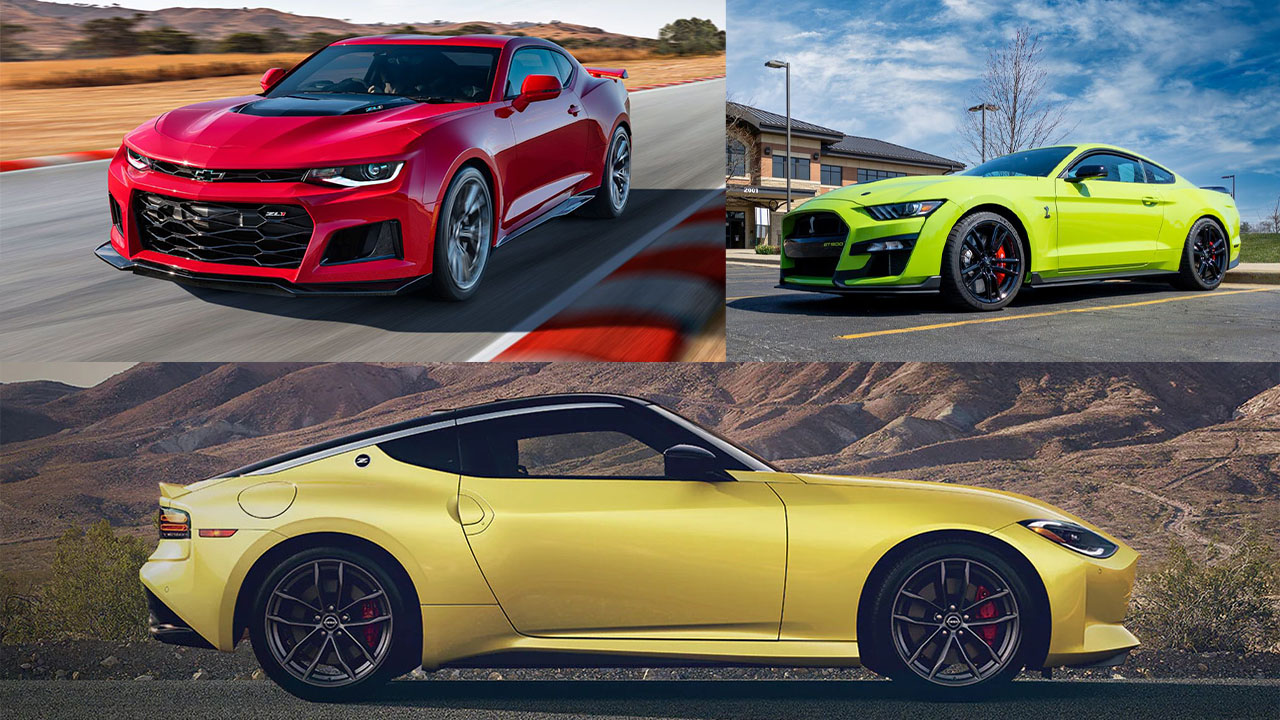Over the past two decades, the auto industry has developed a penchant for resurrecting discontinued nameplates and reintroducing them as modernized versions of once-defunct models.
This trend arguably began with the relaunch of the Volkswagen Beetle in 1998 and BMW’s reinvention of the Mini in 2000.
The results of these revivals have been mixed. On the sports car front, enthusiasts were treated to the reimagined Toyota Supra and the new Nissan Z.
In the SUV category, iconic models like the Jeep Gladiator, Ford Bronco, and Land Rover Defender made triumphant comebacks. However, not all resurrections have lived up to expectations.
For instance, Chevrolet revived the Blazer name for a sporty-looking crossover, diverging from its rugged, off-road roots as a Wrangler competitor.
Similarly, the Grand Wagoneer returned as a luxurious, six-figure SUV better suited for highways than backcountry trails.
Here are 17 classic nameplates that have been brought back to life. While there are others, these represent some of the most notable successes, along with a few less fortunate attempts.
1. Acura NSX
When Honda revealed the original NSX supercar in 1991, it stunned the automotive world. Marketed as the Acura NSX in the U.S., the mid-engine marvel boasted cutting-edge technology, including an aluminum structure, a 270-horsepower all-aluminum DOHC VTEC V-6 with an 8500 rpm redline, and titanium connecting rods.

It delivered Ferrari-level performance with Honda’s reliability and comfort. Production ended in 2005, but Acura resurrected the NSX in 2017 as an all-wheel-drive hybrid.
The modern version pairs a twin-turbo V-6 with three electric motors, delivering a combined 573 horsepower. Despite its performance pedigree, sales have been underwhelming, with only 161 units sold in the first seven months of this year.
2. Chevrolet Blazer
Chevy’s K5 Blazer, produced from 1969 to 1993, was a robust yet refined full-size SUV based on the brand’s pickup platform. In 1994, it evolved into the four-door Tahoe, while the Blazer name continued on the smaller S-10 Blazer, derived from the S-10 compact pickup.

This model eventually became the Trailblazer, discontinued in 2009. In 2019, the Blazer name returned—not as an off-road SUV but as a car-based crossover with minimal off-road capability.
While its design borrows from the Camaro, Chevrolet describes it as “street-inspired.” Critics, however, consider it a missed opportunity to honor the original’s rugged legacy.
3. Chevrolet Camaro
After 35 years of continuous production and four generations, Chevrolet seemingly ended the Camaro’s run in 2002. However, the iconic muscle car returned in 2010, drawing inspiration from its first-generation design (1967–69).

This revival was a response to the retro-styled Ford Mustang and Dodge Challenger, launched in 2005 and 2008, respectively.
Chevrolet also revived several classic Camaro trims, including the RS, SS, Z/28, and COPO. While the spotlight now shines on the mid-engine C8 Corvette, the Camaro’s sixth generation, introduced in 2016, continues production.
4. Dodge Challenger
The original Dodge Challenger (1970–74) was a quintessential muscle car, sharing its platform with the Plymouth Barracuda and featuring legendary V-8 engines like the 426 Hemi.
After an ill-fated front-wheel-drive version (1978–83), the Challenger was absent for decades. It reemerged in 2008 with a modern design honoring its muscle car heritage, including the return of the R/T trim in 2009.

Today’s Challenger remains in production, with its Hellcat and Demon models earning titles as the most powerful American muscle cars ever built.
5. Dodge Charger
Introduced in 1966, the Dodge Charger underwent four generations of continuous production until 1978. A front-wheel-drive version, based on the K-car platform, appeared from 1982 to 1987 but failed to capture the original’s appeal.

In 2006, Dodge reintroduced the Charger as a rear-wheel-drive sedan, sparking controversy with its four-door design. Despite this, the Charger found success, particularly in its high-performance trims like the R/T and Hellcat.
The current seventh-generation Charger shares its supercharged Hellcat Hemi engine with the Challenger, making it the most powerful American sedan ever produced.
6. Fiat 500
The original Fiat 500, or Cinquecento, was produced from 1957 to 1975. A tiny, economical city car with a rear-mounted air-cooled engine, it became a cultural icon in Europe, much like the Volkswagen Beetle.
In 2007, Fiat revived the 500 with a modern design that captured the original’s charm while incorporating a front-engine, front-wheel-drive layout.

The updated 500 gained popularity in Europe and marked Fiat’s return to the U.S. market in 2011.
Today, the lineup includes a turbocharged Abarth model and an electric version, though the 500 is set to be discontinued once again after this model year.
7. Ford Bronco
The first-generation Ford Bronco, produced from 1966 to 1977, has remained a hot favorite among collectors for nearly a decade, with its values steadily climbing.
In 1978, the two-door SUV was redesigned to a full-size model, enhancing its competition with Chevrolet’s Blazer. The full-size Bronco remained in production for five generations until 1996.
Additionally, Ford introduced the smaller Bronco II from 1984 to 1990. While it enjoyed success during its run, it never managed to capture the spirit or appeal of the original model.

Ford teased fans with the Bronco Concept at the Detroit Auto Show 14 years later, and since then, rumors of its return have persisted. Now, that comeback is finally happening.
The 2020 Ford Bronco is built on the ladder frame underpinning the Ford Ranger pickup, promising impressive off-road capabilities.
Fans and enthusiasts are hopeful that the new Bronco will compete directly with the Jeep Wrangler, offering both performance and iconic styling.
8. Ford Shelby Mustang GT350/GT500
Ford made waves in 2007 by bringing back the Shelby GT500 Mustang, a nameplate that hadn’t been produced since 1970.
The new GT500 arrived with a supercharged engine producing 500 hp, marking it as the most powerful factory-produced Mustang ever at the time.
Since its reintroduction, several versions have come and gone, with the most recent iteration being the 2013–14 Shelby GT500, boasting 662 horsepower.

Now, the 2020 Shelby GT500 is set to push the boundaries further with its 760-hp supercharged 5.2-liter V-8 paired with a dual-clutch automatic transmission.
Meanwhile, the Shelby GT350 nameplate lay dormant for a significantly longer time. Originally sold from 1965 to 1970, it was reintroduced in 2016 and remains part of the Mustang lineup today.
The GT350 features a 526-hp flat-crank 5.2-liter V-8 engine and retains a six-speed manual transmission, staying true to its classic performance roots.
9. Ford Thunderbird
Ford’s first retro-inspired redesign came in the form of the 11th-generation Thunderbird, produced between 2002 and 2005. This model marked the first return of the T-Bird in five years and drew design inspiration from its original 1955 debut.
It was a modern reinterpretation of the classic Thunderbird, emphasizing a two-seater configuration for the first time since 1957.
The design also incorporated features from the 1961–63 generation’s taillights and even the porthole hardtop from the 1956 and 1957 models.

The new Thunderbird was rear-wheel drive and shared its platform with the Lincoln LS and Jaguar S-Type sedans—both models being part of Ford’s portfolio at the time.
Powered by a 3.9-liter 252-hp V-8 engine borrowed from Jaguar, the retro-modern Thunderbird struggled with a disjointed interior that failed to resonate with buyers.
Despite its promising design, the model did not find commercial success and did not continue beyond its production run.
10. Jeep Gladiator
Many people forget that Jeep has a long history of producing pickups. From 1962 until 1971, Jeep built the Gladiator pickup, which shared its platform and front suspension with the Wagoneer.
After 1971, Jeep discontinued the Gladiator nameplate but remained active in the pickup market until 1988.

The concept for the Gladiator returned to the spotlight 16 years later, debuting as a Wrangler-based pickup at the Chicago Auto Show. Finally, the dream became a reality with the launch of the 2020 Jeep Gladiator.
The Gladiator became a sensation as the first-ever four-door pickup offered by Jeep—and notably, the first-ever convertible pickup Jeep had produced.
It features a V-6 engine and a Rubicon variant with enhancements like a lifted suspension, larger off-road tires, and front and rear locking differentials, allowing it to tackle tough terrain with ease.
11. Land Rover Defender
The Land Rover Defender has roots stretching back to the original Land Rover, which was introduced over 70 years ago. The Defender nameplate first appeared in the 1980s, applied to the 90 and 110 models.
It eventually made its way to the United States in 1993 but was discontinued four years later. Although no longer in production, both the 90-inch and 110-inch models have become modern classics that are in high demand among collectors.

Production of the rugged Defender officially ended in 2016, but it made a strong return four years later. The latest-generation Defender debuted with two body styles: the Defender 110, which offers an optional third-row seat, and the shorter wheelbase Defender 90.
Under the hood, buyers can choose between a 300-hp 2.0-liter turbocharged four-cylinder engine or a 400-hp 3.0-liter V-6 engine. Pricing for the new Defender starts at just over $50,000.
12. Nissan GT-R
The Nissan GT-R returned to the market in 2009, marking the first time this high-performance icon appeared in America. The GT-R had a long history that began in 1969, originally tied to the Nissan Skyline model.
Though it saw its first generation end in 1973, the nameplate returned in 1989, becoming one of the most celebrated performance icons in automotive history.

The modern Nissan GT-R has retained its all-wheel-drive and turbocharged performance roots, with the Nissan GT-R Nismo now producing 600 horsepower.
This engine, paired with the GT-R’s legendary handling capabilities, has cemented its position as one of the fastest sports cars on the market.
13. Nissan Z
The Nissan Z has had a fascinating history spanning over 50 years, beginning with its introduction as the Datsun 240Z in 1970.
The Z-car was rebranded as the Nissan 300ZX in North America and maintained consistent popularity until its production ended in 2000. Following a three-year hiatus, the 350Z debuted in 2003, featuring a naturally aspirated 3.5-liter V-6 engine.

The 370Z remains in production today with a 3.7-liter engine, unchanged for roughly a decade. However, Nissan enthusiasts continue to reminisce about the Z’s evolution, which has defined much of its performance-focused heritage over the years.
14. Maserati Ghibli
The Maserati Ghibli was originally introduced as a competitor to the Ferrari Daytona, boasting a sleek design and powerful V-8 front-engine sports car setup.
Designed by Giorgetto Giugiaro at Ghia—who would later design iconic cars like the VW Golf, DeLorean, and Lotus Esprit—the Ghibli featured distinctive pop-up headlights and was available in two body styles: the 2+2 coupe and a two-seat Spyder. Production of this first-generation Ghibli ran from 1967 to 1973.

The name Ghibli—which refers to a desert wind in Libya—went dormant for many years until the 1990s when Maserati introduced a second-generation Ghibli based on the Biturbo platform.
This model remained in production from 1992 until 1998. In 2014, Maserati resurrected the Ghibli name once again, this time reimagined as a turbocharged V-6-powered luxury sedan that was smaller than its flagship Quattroporte.
The modern Ghibli has remained largely unchanged over the past five years, but Maserati has hinted at an exciting new update for the model in the near future.
15. Pontiac GTO
Few cars have had as much influence on the automotive market as the original 1964 Pontiac GTO.
The muscle car was developed by Pontiac’s chief engineer, John DeLorean, and his team and was brought to market with brilliant marketing from Jim Wangers. The GTO is credited with kickstarting the original muscle car era.
Despite its success, the muscle car era proved to be short-lived, and production of the GTO ultimately lasted only a decade, despite undergoing a few redesigns and surviving across four generations.

By the early 2000s, Pontiac faced difficulties, with its popular Firebird being discontinued in 2002 and its brand losing momentum.
In 2004, as a last-ditch effort to regain its previous glory, Pontiac introduced a new GTO model based on the Australian Holden Monaro.
This new model was rear-wheel drive and powered by a powerful LS engine but failed to generate the sales needed to save the struggling brand.
Pontiac’s attempt lasted only three years before being discontinued, and the brand itself was dissolved in 2010.
16. Toyota Supra
The Toyota Supra originally started as a sportier, more powerful variation of the Celica in 1978, maintaining a rear-wheel-drive layout through its early years.
It successfully spanned two generations until 1987, when it transitioned into its own standalone model.
During this time, Toyota introduced a turbocharged engine option, the 231-hp 3.0-liter inline-six, which bolstered the Supra’s performance credentials. Production continued with this turbocharged engine until 1992.
In 1993, Toyota took things a step further by introducing the fourth-generation Supra powered by the legendary 2JZ inline-six. This engine came in both naturally aspirated and twin-turbo versions, with the turbocharged variant producing over 300 horsepower.

Car enthusiasts and tuners soon discovered that MKIV Supras could reach an impressive 1,000 hp using stock engine blocks, cementing their legendary status among performance car fans.
Unfortunately, sales of the Supra in America lasted only five years before Toyota withdrew the model. However, Toyota has now revived the Supra through a partnership with BMW.
The modern Supra is a two-seat coupe powered by BMW’s twin-turbo 3.0-liter inline-six, rated at 335 horsepower.
Mechanically similar to the new BMW Z4 Roadster, this modern iteration of the Supra is one of the most anticipated cars in recent memory and represents a blend of Toyota’s iconic performance history and BMW engineering.
17. Volkswagen Beetle
After over two decades and two generations, Volkswagen has officially discontinued its modern interpretation of the iconic Beetle. This marks the second time the beloved Bug has come to an end.
The original Beetle was first designed by Ferdinand Porsche in the 1930s and remained in production globally from 1938 until 2003, achieving remarkable popularity with more than 21 million units produced.
All original Beetles were rear-engine and air-cooled, and their presence spanned a variety of markets worldwide. In the United States, production of the original Beetle ended in 1979.
The New Beetle was introduced 19 years later in 1998 and based on the front-engine, front-wheel-drive platform of the Volkswagen Golf.

It successfully reimagined the classic design for modern tastes and enjoyed sufficient success to warrant a successor in 2012. This updated model removed quirky elements like the flower vase on the dash but retained the Beetle’s charming spirit.
The Final Edition was introduced as the last special trim in the modern Beetle’s production cycle, featuring a turbocharged 2.0-liter engine and luxurious touches like diamond-stitched leather seats.
With the Final Edition representing the end of an era, Volkswagen closed the chapter on one of the most iconic and enduring nameplates in automotive history.

